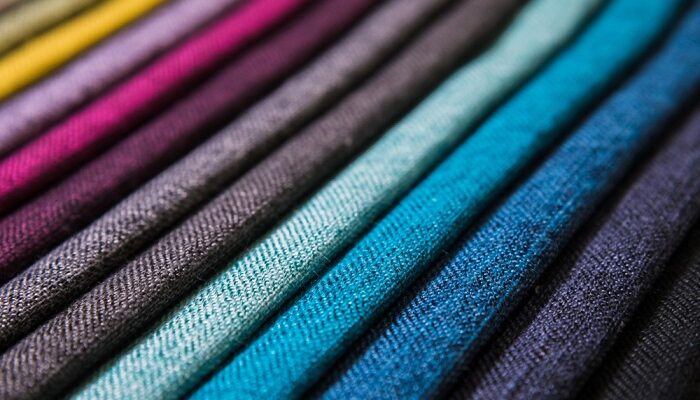If the sight of fabric swatches or bolts in stores fills you with joy, then this article is tailored just for you. Whether you’re a beginner in upholstery or searching for fabric for curtains, blinds, or homewares, there are thousands of different types and styles of upholstery fabric available. To help you find the right fabric for your project, this article explores what you need to know when choosing upholstery fabric, including expert tips and advice.
Upholstery fabric isn’t just used for traditional upholstery – it’s also used for making curtains, blinds, and other soft furnishings. The art of upholstery has a fascinating history that traces back to the Middle Ages when skilled artisans crafted fabric furnishings. It gained popularity in the 18th century when the wealthy demanded comfort in their home furnishings, and now it’s on the rise again as people spend more time at home during as well as after the pandemic.
The article covers a range of topics, including what to look for when buying upholstery and curtain fabric, different types of upholstery fabric, and where to buy upholstery fabric. Additionally, this article provides helpful tips on how to discover cost-effective options that don’t sacrifice quality.
Table of Contents
What constitutes upholstery fabric?
Upholstery fabric refers to fabrics or textiles used to cover furniture or make soft furnishings such as curtains and blinds. It can be made from woven or knitted threads using various fibers such as cotton, linen, polyester, velvet, polypropylene, and rayon, among others. It can be seen that for those seeking to select fabrics, the vast array of multipurpose options can be overwhelming. However, with some tips, one can choose the upholstery fabric type for their project.
We advise that synthetic fabrics are durable, cost-effective, and can withstand stains, but they require caution when ironing. Although upholstery fabrics are typically used for covering furniture, the article highlights the thriving industry where they are used to create various homewares, including seat cushions, footstools, curtains, and blinds. The article provides tips on how to select upholstery fabrics based on the intended use of the fabric and where to purchase them.
How to choose upholstery and curtain fabric?
Picking the right fabric can be a difficult task, as it relies on several factors. It’s not unusual for individuals to take a long time to decide due to the overwhelming variety of fabrics. For example, one piece took a considerable amount of time to choose. A particular item, created from a vintage tablecloth discovered at a local marketplace, holds sentimental value because of its unique design and colors.
Fortunately, we’ve compiled a few factors to consider when purchasing fabric. It’s always preferable to conduct thorough research before deciding because once you’ve chosen, you’ll likely have the fabric for years to come.
Fabric weight and durability
To choose the right fabric, consider your intended use and how hard-wearing the fabric needs to be. For upholstered furniture in high-traffic areas, look for tightly woven, durable fabrics with a high thread count and a Martindale value of at least 25,000. Using heavier-weight fabrics with lining is ideal for curtains and blinds as it provides better drape and a polished finish.
When shopping for upholstery fabrics, check the Martindale value and test the weave by holding and pulling a sample tightly in both directions. Choosing the right fabric is important as you will likely live with it for years. It’s always recommended to avoid those upholstery fabrics with a Martindale value below 25,000 as they may lack structural integrity and be challenging to work with.
Print or Pattern
The print or pattern of your upholstery fabric can have a significant impact on the overall style of your furniture. If you are making wider curtains or blinds, a large repeating print may need additional fabric to accommodate the pattern repeat. For smaller pieces of furniture, such as cushions or accent chairs, a bold print or pattern can add interest and visual appeal.
However, for larger projects like curtains or blinds, pattern matching is also important to consider. If you’re using a patterned fabric, it’s crucial to ensure that the pattern lines up correctly at the seams to avoid a messy or disjointed look. This may require extra planning and precision when cutting and sewing the fabric.
Stain Resistance
Different homes have varying levels of risk for spills and stains, making stain resistance an important factor to consider when selecting upholstery fabric. For households with young children or pets, it’s advisable to choose an upholstery fabric that is easy to clean, such as synthetic blends like microfiber. These fabrics are durable and stain-resistant, making them a practical choice for homes with high traffic and frequent spills.
For multipurpose fabrics that are not stain-proof, an upholstery protector spray can be applied to prevent stains. Alternatively, busy prints can help to camouflage any stains that may occur. When selecting home furnishing options, it’s essential to consider future risks, such as living with a toddler while wanting cream linen.
Price
Upholstery fabrics are available at various price points, making it essential to consider the budget for your project. The project you are working on will determine the amount you need to spend, with traditional furniture upholstery requiring higher quality material. However, affordable options are available if you’re on a tight budget and looking for simple home furnishing fabrics that don’t need to be highly durable.
At FabCouture, we offer a fantastic selection of high-quality upholstery fabrics at various price points. Our Multifabric category has affordable options that don’t compromise on quality, allowing you to create beautiful furniture without breaking the bank.
Allergies
If you or someone you live with has allergies, it’s crucial to consider the fabric’s qualities for dust-repelling capabilities. Short-fibered materials are less likely to attract dust and pet hairs, making them a practical choice for allergy sufferers. Natural fabrics are best known for their hypoallergenic qualities and include cotton, linen, and silk, and are often bought for this quality.
When selecting upholstery fabric, it’s essential to consider fire regulations as well. Many upholstered items are required to meet specific fire safety standards, so be sure to check the regulations in your area before making a purchase.
Conclusion
Choosing the right upholstery fabric for your project is essential to achieve the desired look and durability. Natural fabrics such as cotton, linen, and wool offer a range of textures and colors and are suitable for most projects, while synthetic blends like microfiber are durable and stain-resistant, making them a practical choice for homes with young children or pets. It’s also essential to consider factors such as fire regulations, allergies, and pattern matching.
There is a wide range of upholstery fabrics available at various price points, including many affordable options on FabCouture that don’t compromise on quality. By considering the factors mentioned above, you can select the ideal upholstery fabric for your project, and craft beautiful and functional furniture that will endure.




